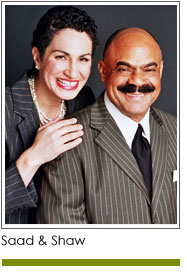 Talented leadership is always in high demand. The question is: where do you look for leaders, who are you overlooking, and how do you effectively sustain their involvement? When recruiting talent for your organization, business or municipality make sure you consider individuals over age 55. Here’s what we know – these “so called seniors” represent a growing percentage of the population, and many have experience, education, and connections that can transform communities and organizations. They can provide valuable leadership in the civic and nonprofit sectors, when called upon.
Talented leadership is always in high demand. The question is: where do you look for leaders, who are you overlooking, and how do you effectively sustain their involvement? When recruiting talent for your organization, business or municipality make sure you consider individuals over age 55. Here’s what we know – these “so called seniors” represent a growing percentage of the population, and many have experience, education, and connections that can transform communities and organizations. They can provide valuable leadership in the civic and nonprofit sectors, when called upon.
It is important to consider individual seniors for individual positions in organizations, agencies and businesses. It is equally important to create a local or regional organizational structure that attracts and engages older individuals who want to make an impact. In many communities there is an organized effort to attract and retain young leaders. A similar effort should be made to engage older residents. Care is taken when recruiting younger talent, and similar attention should be paid to the recruitment and engagement of older talent.
For example, when looking at community development, economic growth, transforming education, or increasing cultural opportunities “seniors” can be major contributors. Many have skills, experience and relationships that have been developed over years and decades. Those who had careers as corporate executives and managers have worked in communities across the country and can bring that national exposure and learning to your local community. They can play key roles on local and state civic boards and commissions. Their strategic thinking and board service in other communities can add value to local nonprofit boards.
Creating a structure that focuses on engaging the talent of seniors can yield financial and civic rewards. Such a structure can also serve as a formal way to “welcome home” those seniors who are returning to the community after careers in other parts of the country, or internationally. Consider this: What mechanisms are in place to engage people returning home, to introduce them to current stakeholders, and to facilitate their community engagement?
Evaluate local programs that target young, talented professionals for civic engagement. Could a similar program be developed for talented seniors? What structures can be created to welcome and engage individuals who had successful careers in other parts of the country, as well as those who worked regionally? What meaningful paid and unpaid opportunities are available? This is not a generation looking to “lick envelopes” – these are talented leaders who can strategically add value and help define solutions to pressing civic issues.
Take a look around and see who’s in town. Identify who is coming home and create a strategy to engage them. It’s mutually beneficial: a win for the community, and a win for seniors. Don’t let stereotypes render top local talent invisible.
Copyright 2014 – Mel and Pearl Shaw
Mel and Pearl Shaw position nonprofits, colleges and universities for fundraising success. For help with your campaign visit www.saadandshaw.com or call (901) 522-8727.















